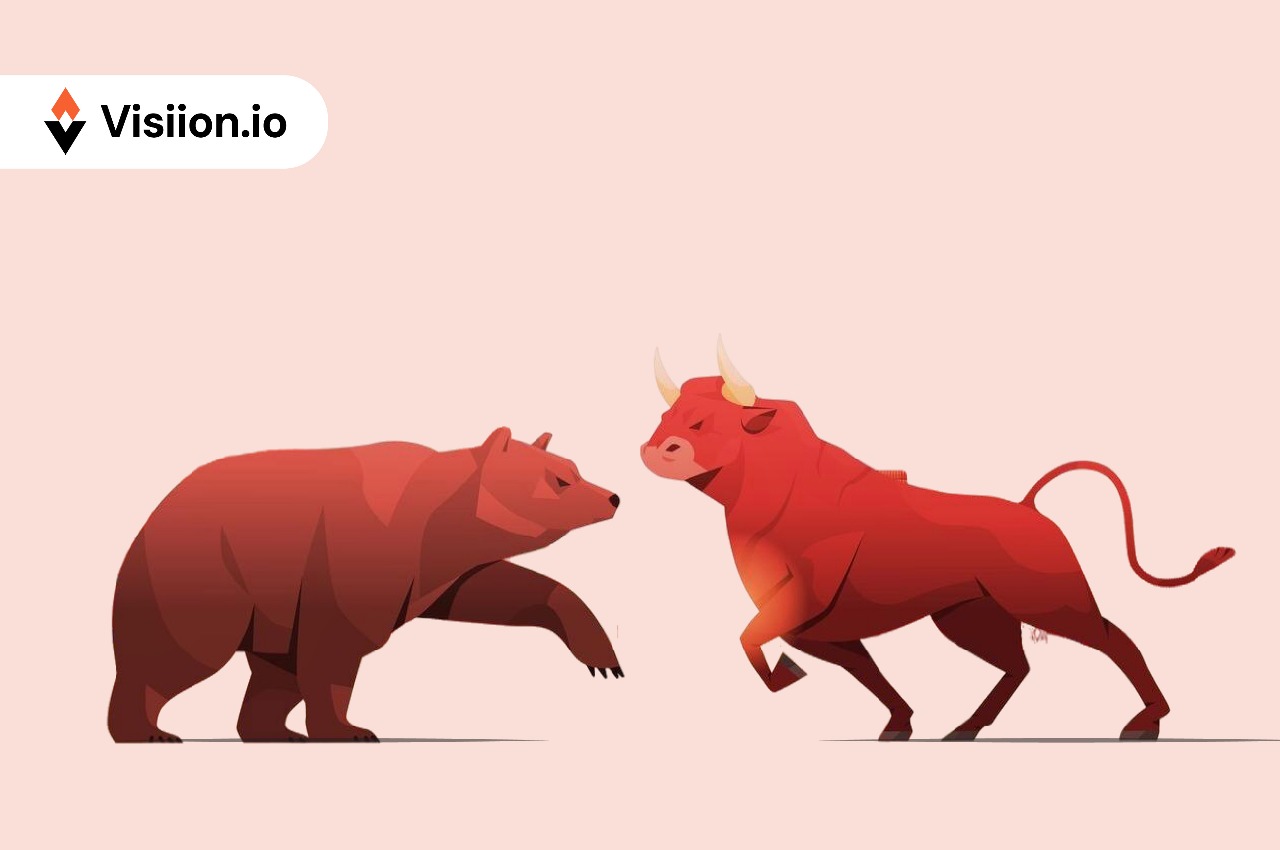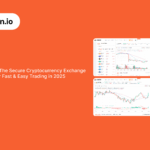Crypto markets are just like traditional markets when it comes to cycles. There are bull runs, where the prices of almost every asset in the market shoot up. Similarly, there are bear cycles when almost every asset in the market crashes.
These cycles are extremely important for traders and even investors. Everybody wants to buy at the bottom and sell at the top. But that doesn’t happen in most of the cases, correct? But if you understand these bear and bull cycles, it becomes easy for you to hedge your bets, create the right entry/exit points, and increase the likelihood of profit.
In this blog, we will take a look at these cycles, will try to understand how these cycles move and how traders and investors can prepare themselves for the same.
What Is a Bull Market?
A bull market in crypto is a phase when prices rise for a sustained period. Bitcoin climbs, and all coins follow suit. A lot of traders and investors get greedy and start taking long positions. You might see new projects launched almost every day. Everyone around you will start talking about trading and multiplying their wealth. People feel invincible and are willing to take any sort of risk.
Most bull runs start slow. Generally, it starts with Bitcoin. Once Bitcoin breaks any heavy resistance, the entire market sentiment starts shifting. People start pouring their money in, and boom! Everyone is feeling FOMO, which forces them to enter into the traders blindly Influencers start bragging about certain coins and people start believing them. That’s exactly when you know that the bulls are in control.
A perfect example? The 2020–2021 run. Bitcoin moved from $10K to $69K in 18 months. That’s 7X return in 1.5 years! Similarly, altcoins like Ethereum and DOGE also shot up. Even NFTs exploded followed. NFTs exploded. Meme coins like Doge and Shiba hit the moon.
What Is a Bear Market?
A bear market in crypto is the exact opposite. This is a phase when prices keep falling. Traders sell at every bounce. The fear that grips traders, investors, and influencers disappear overnight! That’s when blue chip coins like Bitcoin lose key levels, and altcoins start to bleed. Venture capital firms slow down in their funding spree, and new projects avoid being launched.
The worst part? It can last for months or even years. Like in 2018, when BTC crashed from $20K to $3K. Or in 2022, when it dropped below $20K again after peaking near $69K.
Bull vs Bear Markets
Let’s compare them side by side, the crypto way:
| Feature | Bull Market | Bear Market |
| Price Action | Higher highs, higher lows | Lower highs, lower lows |
| Sentiment | Greed, excitement, overconfidence | Fear, doubt, despair |
| Volume | Increasing volume supports rallies | Volume fades as dips deepen |
| Media Coverage | Positive headlines dominate | Bad news and scandals flood feeds |
| New Projects | Frequent launches, strong hype | Fewer launches, VC pullbacks |
| Strategy Focus | Trend following, aggressive entries | Risk control, long-term positioning |
Now the problem is, people don’t exactly know whether they are in a bull market or bear market. So, how can you identify the same? Well, time to find out
What Are the Signs of a Bull Market?
Here’s what you’ll often see during a bullish phase:
1, Rising Prices Across the Board
Bitcoin leads the charge, and altcoins join the rally. Market caps often surge. People consider every dip a buying opportunity. You’ll find a lot of tokens that double or triple in weeks.
2. Explosive Trading Volume
Volume spikes during price surges as more and more people start investing. That shows traders are all-in. You’ll see huge green candles backed by strong volume, which builds powerful momentum.
3. New Highs and Breakouts
Bitcoin breaks past all-time highs, and Ethereum flips resistance zones. Low-cap coins fly 20–30% in a day. That’s how you ride a bull.
4. Retail FOMO and Media Buzz
Mainstream news starts covering crypto. In fact, even celebrities promote tokens. Everyone talks about crypto, and people start creating X threads like “How I made $100K flipping NFTs.”
5. Onchain Activity Explodes
Onchain activity is another major sign in the Bull market. During a bull run, Stablecoin inflows rise, and Whale addresses accumulate. You might also see spikes in transaction fees due to crazy user traffic. Fees spike. Gas wars return. Ethereum layer-2s see crazy user traffic.
Signs You’re in a Bear Market?
Now, let’s flip the switch. Here’s what a bearish market looks like:
1. Consistent Price Drops
No matter the news, prices keep falling. Bitcoin fails to hold support, and this causes altcoins to crash even harder. You might also see green days get sold off within hours.
2. Dying Volume and Low Liquidity
Volume often dries up in a bear market, and order books thin out. Market makers pull back as they do not want to take the risk. You’ll see wicks with no follow-through. Such price action indicates weakness in the market.
3. Fear Takes Over
Crypto X turns gloomy over time. Even Telegram groups shrink, and people stop believing everything and anything they see on social media. Sentiment metrics like the Fear & Greed Index hit extreme lows for weeks. Reason? No one’s excited.
4. Project Failures and Rugpulls
Weak teams vanish, and promising roadmaps stall. A lot of founders disappear, and protocols fail. There have been many like Terra, Celsius, and FTX that failed miserably. Not because they were bad projects but because they found themselves in the bear market.
5. Regulatory Heat and Macro Pressure
The SEC often tightens its noose on tokens and firms with lawsuits. Inflation goes up, and global uncertainty rises.
These are the signs of a bear market and a bull market. Now the question is, are there any tools available that can give you an idea about the existing phase of the market? Let’s find out.
What Tools Can Help Spot Market Phases?
Look, no one tool gives a 100% answer. But combine these, and you’ll get a clear picture.
Moving Averages
200-day Moving Average is your compass. If Bitcoin trades above it, you’re likely in a bull phase. Below it? Watch your step.
Short-term MAs (like 50-day) crossing below the 200-day (Death Cross) often signal extended bear periods.
RSI (Relative Strength Index)
RSI above 70 means overbought. That’s common in bull tops. RSI below 30 means oversold. That’s common near bear bottoms.
But don’t trade it alone. Use it to confirm other signals.
Volume Trends
Track volume on breakouts and dips. Bullish breakouts with high volume? Strong move. Price drop on weak volume? Possible fakeout.
Volume often confirms what price alone can’t show.
Sentiment Indicators
Use the Crypto Fear & Greed Index to measure mood.
- 0–25: Extreme Fear
- 75–100: Extreme Greed
Extreme fear = potential bottoms
Extreme greed = possible tops
It’s not a signal; it’s a temperature check.
Onchain Metrics
Use Glassnode, CryptoQuant or Nansen. Watch:
- Whale wallet accumulation
- Exchange inflows/outflows
- Stablecoin inflow ratios
- Miner selling pressure
Whales buy during fear. Smart money moves early.
It’s very important to understand that a lot of times, these tools and indicators give fake signals, especially when used alone. So, you have to use multiple strategies and tactics to do the same.
How Traders Behave in Both Markets?
Let’s talk psychology, as this can help you understand the herd mentality and how not to get influenced by it. After all, both market phases are the result of human psychology.
In a Bull Market:
- Traders chase green candles
- Newbies turn into “gurus” overnight
- Everyone believes “this time it’s different.”
- Leverage trading goes wild
- NFT floors hit absurd levels
In a Bear Market:
- Traders shift to BTC and stablecoins
- People DCA quietly or leave entirely
- Leverage wipes out portfolios
- Communities shrink
- Only builders remain active
Spotting how people behave gives you early signals. FOMO = late-stage bull. Apathy = late-stage bear.
What You Should Do in a Bull Market?
Here’s how to act smartly:
Ride Trends, But Set Stops
Use moving averages or trendlines to ride the wave. But set stop-losses. Never assume the trend will last forever.
Take Profits in Parts
Don’t wait for the top. Book profits in chunks. 25% at a time works well. Greed is your worst enemy during bull runs.
Use Trailing Stop Orders
Lock gains and let winners run. Trailing stops follow the price up and protect your downside.
Avoid FOMO Buys
Don’t chase pumps. Find coins in consolidation, not ones up 200% in 48 hours. Patience wins.
What You Should Do in a Bear Market?
This is where smart money plays the long game.
Dollar-Cost Average (DCA)
Don’t try to catch the bottom. Buy fixed amounts at regular intervals. It smooths your average cost and builds conviction.
Rotate into Strong Projects
Shift funds into quality. Bitcoin, Ethereum, and protocols with revenue and adoption stay afloat. Memecoins usually don’t.
Keep Cash Ready
Bears create opportunities. Keep dry powder. Use it when panic peaks and prices collapse irrationally.
Learn, Build, Observe
Use the quiet to learn new skills, backtest strategies, and track fundamentals. This is when you sharpen your edge.
Historical Bull and Bear Cycles in Crypto
Let’s look at past cycles and what triggered them.
2013 Bull; 2014 Bear
BTC went from $100 to $1,100. Then Mt. Gox collapsed. Price fell to $200. That bear lasted a year.
2017 Bull; 2018 Bear
BTC surged to $20,000. ICOs boomed. Then the bubble popped. BTC dropped to $3K. Altcoins lost 90%+.
2020 Bull; 2022 Bear
Stimulus money and DeFi kicked off the rally. Bitcoin soared to $69K. Then came inflation, rate hikes, and scandals. BTC fell below $20K again.
And today, you know how BTC has breached $100k mark!
Each cycle had different triggers, but the pattern remained: First comes “hype,” then comes “rally.” Then there is a “collapse,” and finally, every “reset.”
Recognize the Cycle, Adjust the Strategy
The key isn’t predicting the future. It’s knowing what phase you’re in—and adjusting your moves.
In a bull, stay aggressive but not greedy.
In a bear, stay cautious but not fearful.
Markets reward preparation. Watch price, volume, sentiment, and on-chain flows. Don’t react emotionally. Don’t overtrade.
Keep your head clear, your stops tight, and your strategy sharp. That’s how you win in crypto in every market condition.
Note: The above article is for educational purposes only. Visiion.io does not provide any tips or suggestions in any form. Crypto markets carry risks, just like traditional markets. So consult with your financial experts before investing or trading in crypto.






